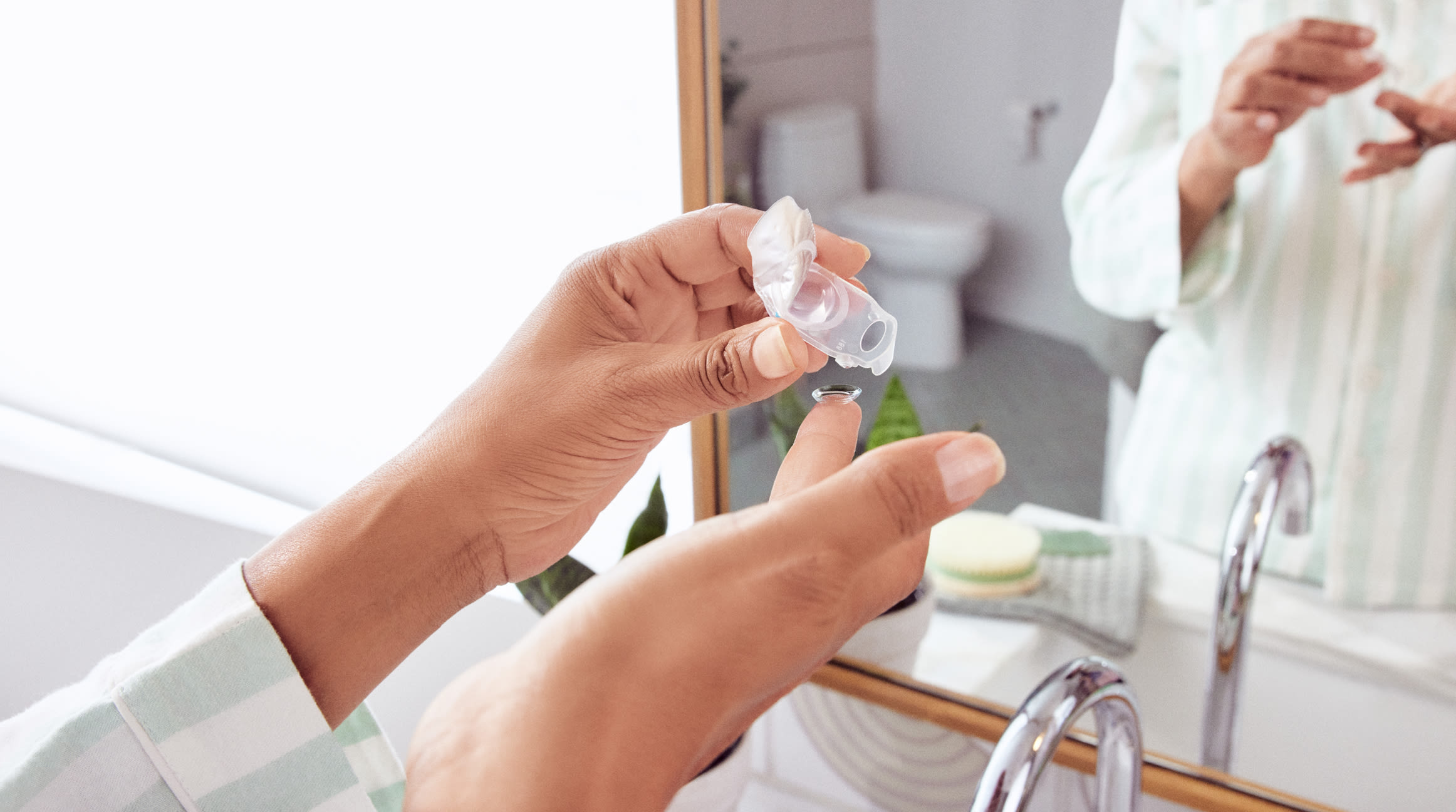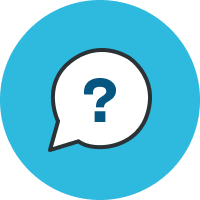When Can You Start Wearing Contacts?

As parents, we always strive to provide our children with the best opportunities, and that includes taking care of their eye health and ensuring they have the right vision correction. If your children wear glasses, you might be wondering when it's the right time to consider switching to contact lenses as they reach important milestones that indicate their growing independence.
While there isn't a specific age requirement for what age can you get contacts, optometrists typically don't recommend them for children under the age of 13. However, it's important to approach this decision on an individual basis because children mature and take on responsibilities at different rates. Kids wearing contacts can help build their confidence and allow their vision to thrive better in some instances because of the benefits that wearing contact lenses can offer.
In this article, we will focus on the factors that indicate how old do you have to be to wear contacts. It's also crucial to consider the factors that might deter them from wearing contacts. Ultimately, the decision to transition from glasses to contact lenses is a personal one for each child and family, and our aim is to help you make this transition a successful one!
Factors That Affect What Age Can You Get Contacts
As you already know, children are constantly growing and moving into various stages of development. As kids age, their vision needs and level of correction constantly change. Kids glasses, specifically designed for smaller faces and durability are a great choice for the younger set. Although, keep in mind that even wearing glasses comes with extra responsibility, like handling them with care and keeping the lens clean. Kids also have to be careful that they do not break glasses during sports or physical activity.
As time passes many younger people begin to express interest in switching to lenses. In fact, in some cases, contacts can do a better job at correcting issues like nearsightedness and improving peripheral vision. Given the chance to consider wearing contacts, parents should think about their child’s level of maturity and ability to administer the care required for contact lens upkeep. Is your child good at doing their chores at a self directed pace? Is your child a good hand-washer and able to perform the hygiene tasks contact lens users practice? Will your child be mindful of how to properly use contact lens cleansing solution and keep the contact lens case secured when not in use? If the answer is yes to these questions, then wearing contacts at a younger age might be right for them.
Eye Development and Maturity
It is important for children to receive regular eye exams to detect any vision problems early on. Consult with an eye doctor to determine if your child might be a good candidate for contacts and to receive proper instruction on how to use and care for them. Given that each child is unique in their development, it’s important to consider if they are mature enough to handle placing their contacts in and removing them on their own. Kids can wear contacts from ages 8 to 11 if they can manage the responsibility.
Dexterity and Responsibility
Deciding on what age you can get contactscomes down to their ability and dexterity. Kids who wear contacts should be able to physically work with their contacts and be comfortable placing the lens directly on their eyes. Kids need to be able to correctly insert their contacts on their own as well as remove them, in addition to sanitizing them daily, and understanding that securely storing contact lenses is part of the routine.
Parents and eye doctors need to ensure that kids can adhere to the schedule for replacing their contact lenses. It's important for kids to be aware of the expiration dates of their contact lenses and to understand how to properly use contact lens solution to keep their lenses free from debris. Knowing when to sanitize the lenses on a daily basis is a crucial aspect of contact lens care for young users. By receiving proper training on contact lens use, children can avoid eye irritation, redness, discomfort, eye pain, and the risk of infection.
Vision Stability
Vision stability can impact the decision to wear contacts. In children, an eye doctor or optometrist can diagnose children with vision problems such as astigmatism, nearsightedness, farsightedness, lazy eye, or poor vision. Depending on the plan to correct the eye issue, contact lenses may or may not be the solution. In some cases, nearsightedness is a condition where contact lens wear in kids can slow the progression of nearsightedness. Additionally, contacts can help support the development of better peripheral (side) vision. As childrens’ vision will change based on their individual development, it is critical for kids to have regular eye exams to assess vision stability.
Types of Contacts Available for Different Age Groups
Contact lenses are made in different materials, are made based on longevity of wear, and can be used for a specific purpose or intended benefit. If you are considering contact lenses for your child, this article will help get you started on the language of contact lenses and the general types of contacts that your child can try.
Soft Lens
These contact lenses are made from a softer, more pliable (flexible) material, and are suitable for many ages. They are made with a hydrogel and are often the most prescribed contact due to their ease of use and comfort.
Hard Lens Rigid Gas Permeable
These contact lenses are a firmer or hard type of material that are more durable and do not bend or fold, and can be suitable for particular contact users. These contacts are also called Rigid Gas Permeable (RGP) lenses. Hard lenses usually provide a clearer sight. These lenses require more cleaning and disinfection. RGP lenses are prescribed less given that they are more challenging to wear but they provide a better field of correction.
Daily Wear
Daily wear contacts are the most commonly prescribed option. These lenses are worn throughout the day and then removed each night and placed in a contact lens case with fresh solution. These can be a good option for kids starting out wearing contact lenses, as a new pair of lenses are used daily, reducing the chances for eye infections.
Two-Week or Monthly
Monthly wear contact lenses are planned replacement lenses that are designed to be worn for up to one month. Monthly contacts are generally thicker and more durable being that they are put in and taken out throughout the month.
Concerns Associated with Children Wearing Contacts
A major concern associated with children wearing contacts is learning eye care and contact lens hygiene. Keeping contact lenses clear will prevent bacteria build up. If not taught proper contact lens cleaning practices, build up on contacts can possibly cause eye infections.
Additionally, contact lenses can cause irritation and discomfort if they are not properly fitted for the eye. To ensure that your child is using their contact lenses appropriately, the eye doctor should provide contact lens instruction for use. These should include proper techniques like hand washing before handling the contacts, correct placement, removal and storage. Kids can be competent contact lens wearers once they learn the best practices for regular cleaning of the lens and honoring the contact lens case replacement schedule, every three months as recommended.
How Old Do You Have to Be To Wear Contacts?
Kids can become suitable candidates for contact lenses given their level of maturity. Parents of kids ages 11 to 14 can broach the subject of wearing contacts with their eye doctor. If the child is aware of hygiene practices, including proper hand-washing and has the natural ability to care for their belongings, they can be a good candidate for contacts.
Kids wear contacts often when they have an especially active lifestyle. Glasses tend to fog, break, and get misplaced so contacts for kids is a convenient more comfortable choice in many cases. Contact lenses for kids can also be more cost-effective as they don't need to be replaced as often as glasses.
Are Hubble Contacts Suitable for Kids or Teenagers?
More often than not, parents will typically wait until their child reaches their teens to to allow their kids to wear contacts. Given that teens will likely begin to focus more on their appearance, the need for vision correction will possibly move from glasses to contacts. All patients who are ages 13+, who have a valid prescription, can wear Hubble contacts. But please note that patients under the age of eighteen must receive parental permission before placing an order with us.
The Process of Getting Fitted for and Obtaining Contacts
To acquire a contact lens prescription, you’ll take your child to visit an eye doctor for an eye exam. During the exam, the doctor will use a variety of tests to determine the best prescription for your child. Depending on the specific needs, the doctor may also recommend specific contact lenses or eyeglasses for your child. After the exam, the doctor will provide your child with a prescription.
In Sight and Out of Mind with Hubble Contacts Subscription
Allowing kids to wear contact lenses offers numerous benefits, granting them freedom and the ability to lead an active and carefree lifestyle, ultimately boosting their confidence. When considering contact lens wear for your child, it's important to evaluate their maturity level, capabilities, and understanding of proper hygiene practices. Assessing these factors will greatly aid in a smooth transition to wearing contact lenses.
With Hubble, you and your child can find an affordable and convenient choice for daily contact lenses. To get the most out of your contact lenses for your child—and save some time on contact lens care—try a contact subscription from Hubble. With special offers available for both Hubble’s classic lenses and new Hydro by Hubble contacts, you’ll quickly see how we make contacts easy.



